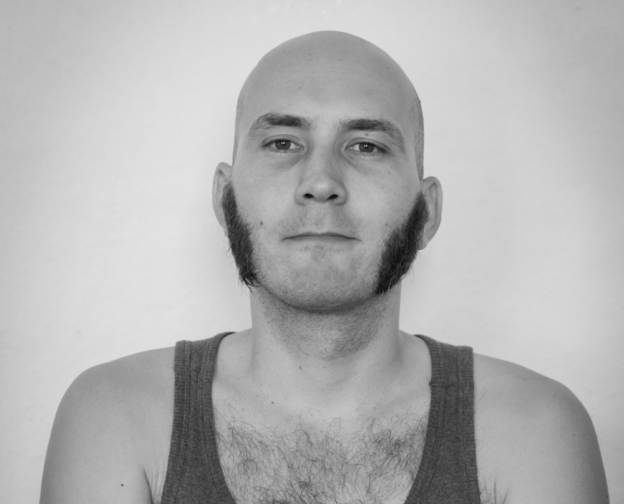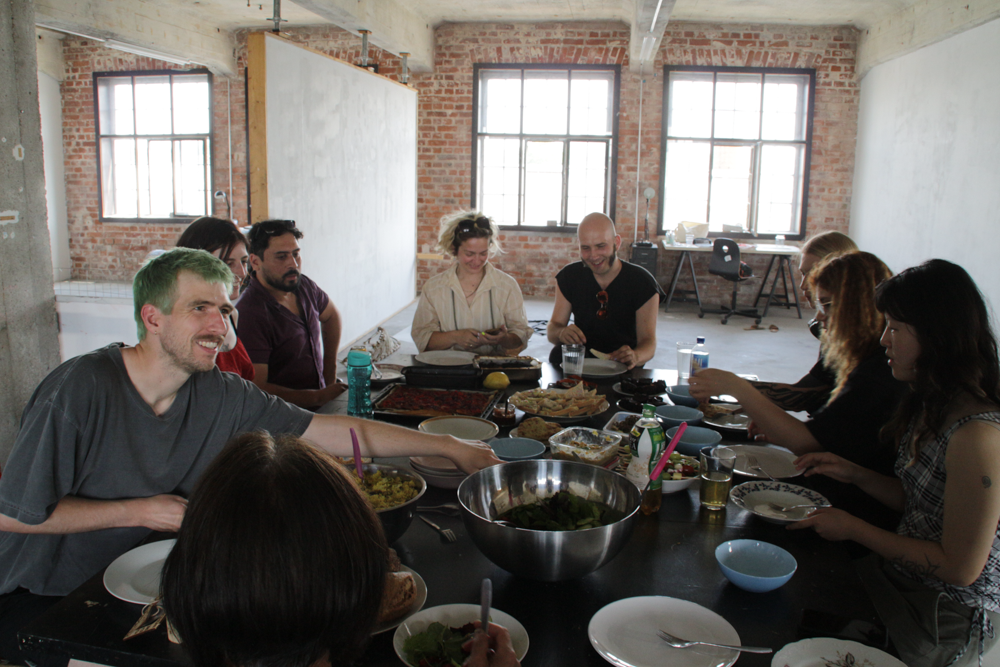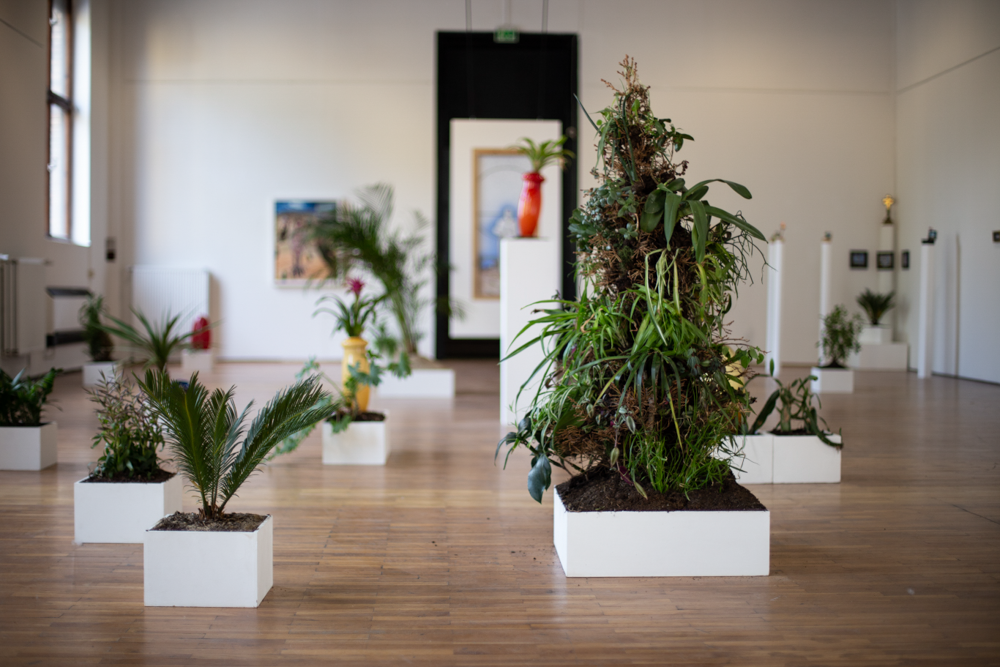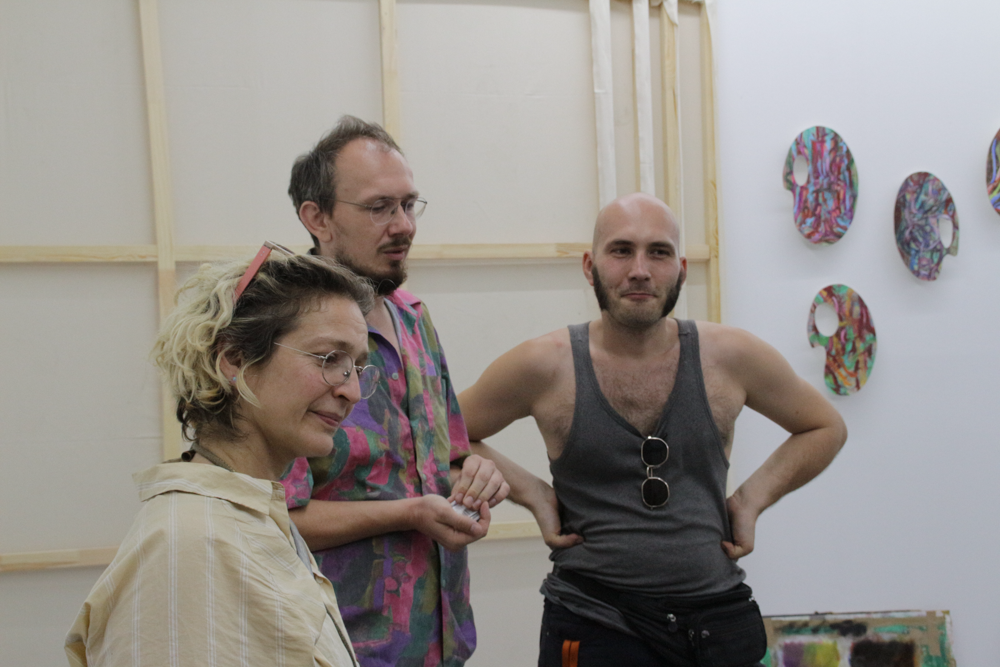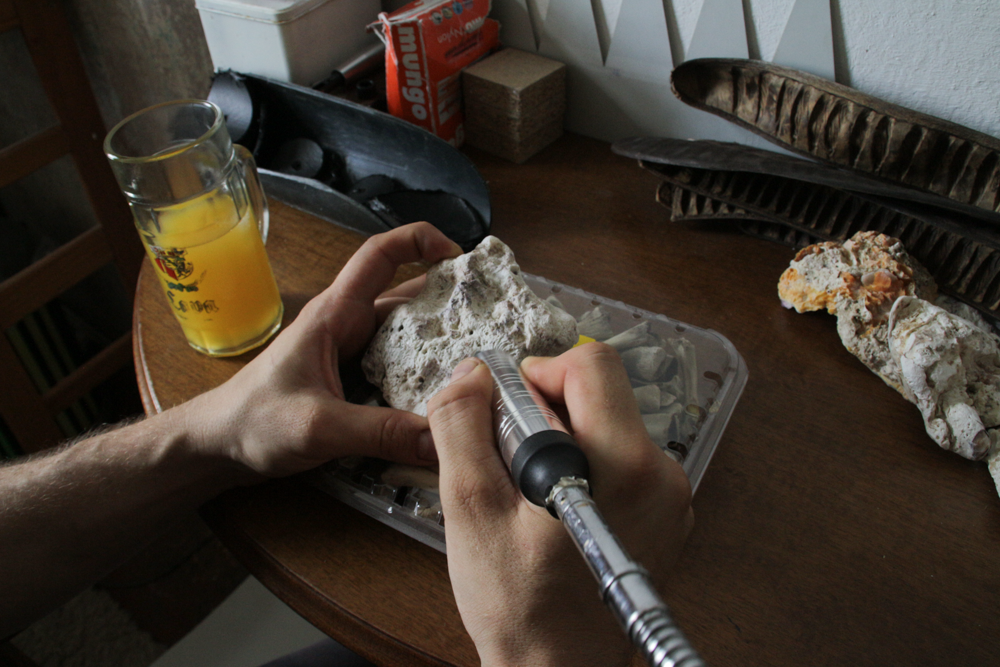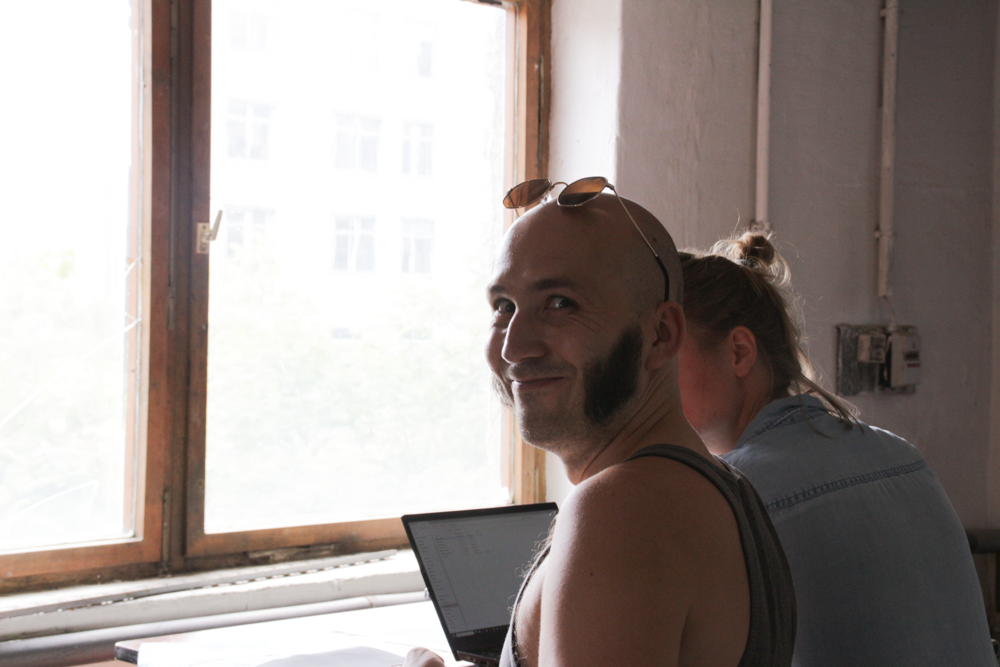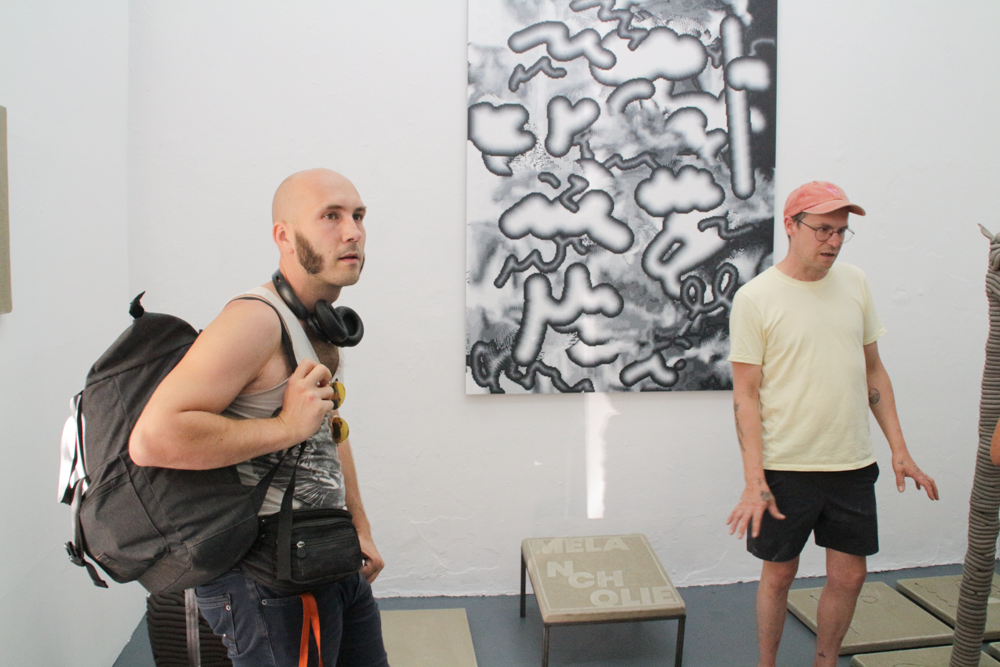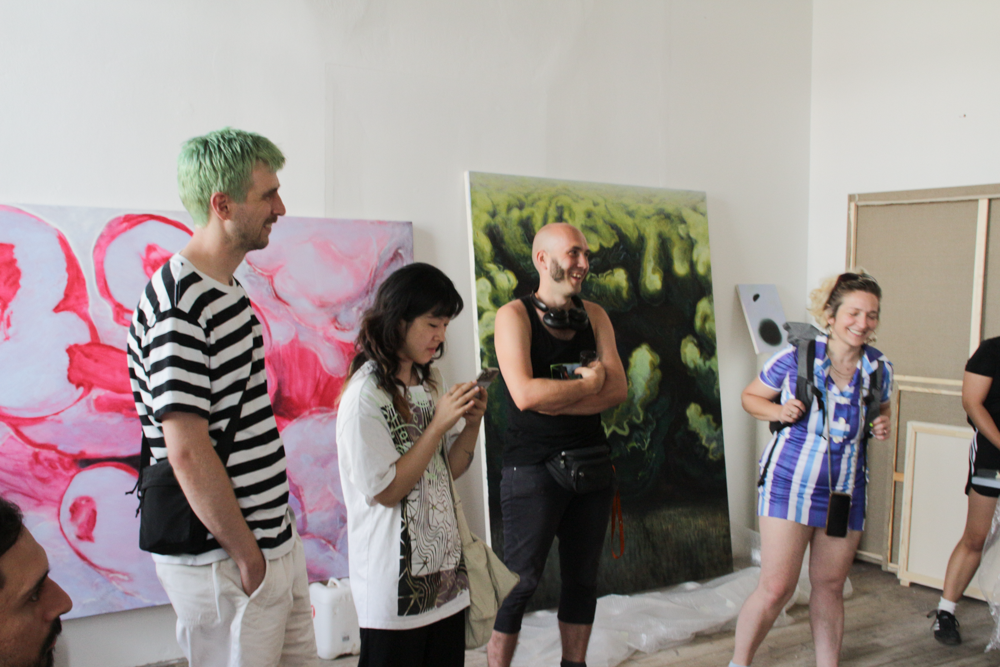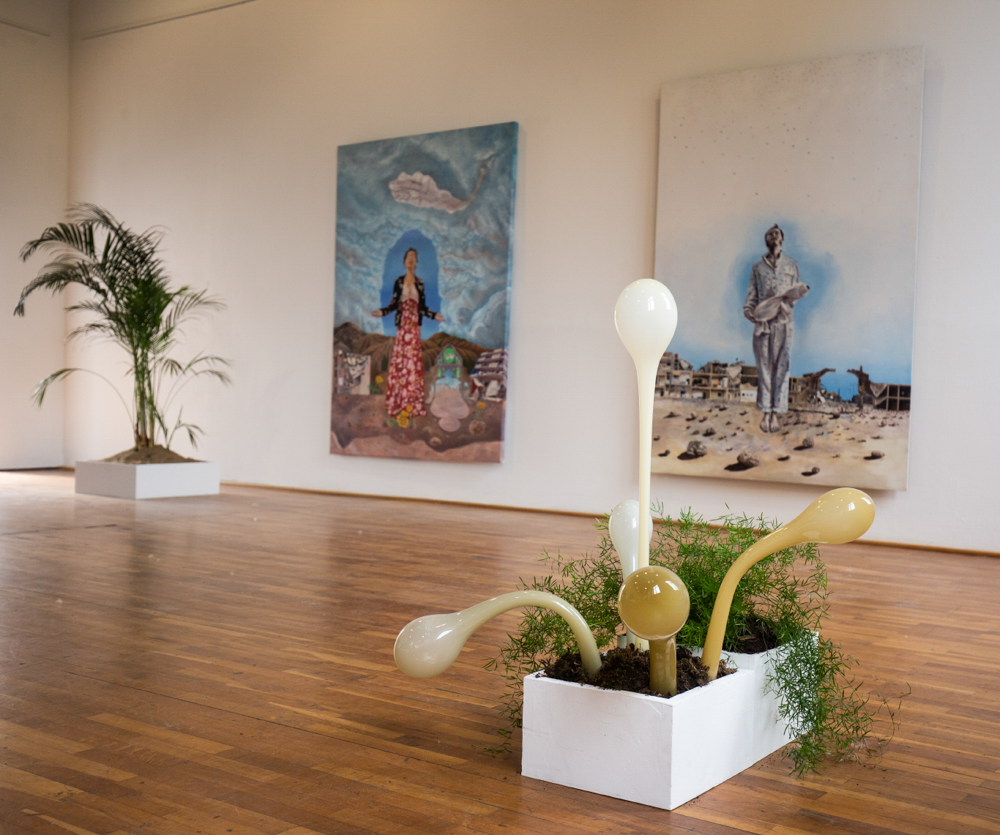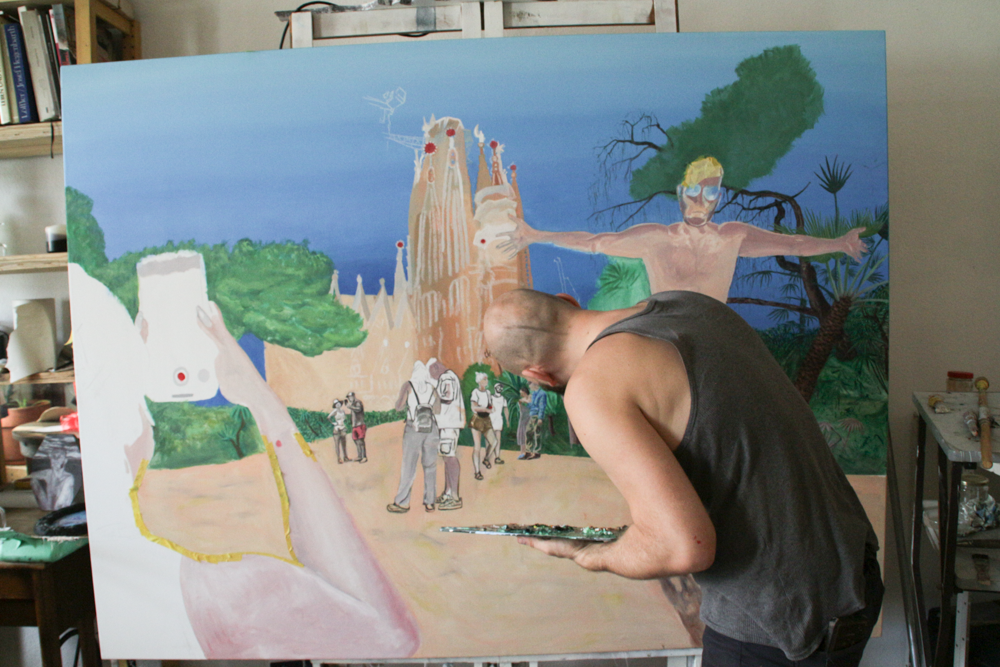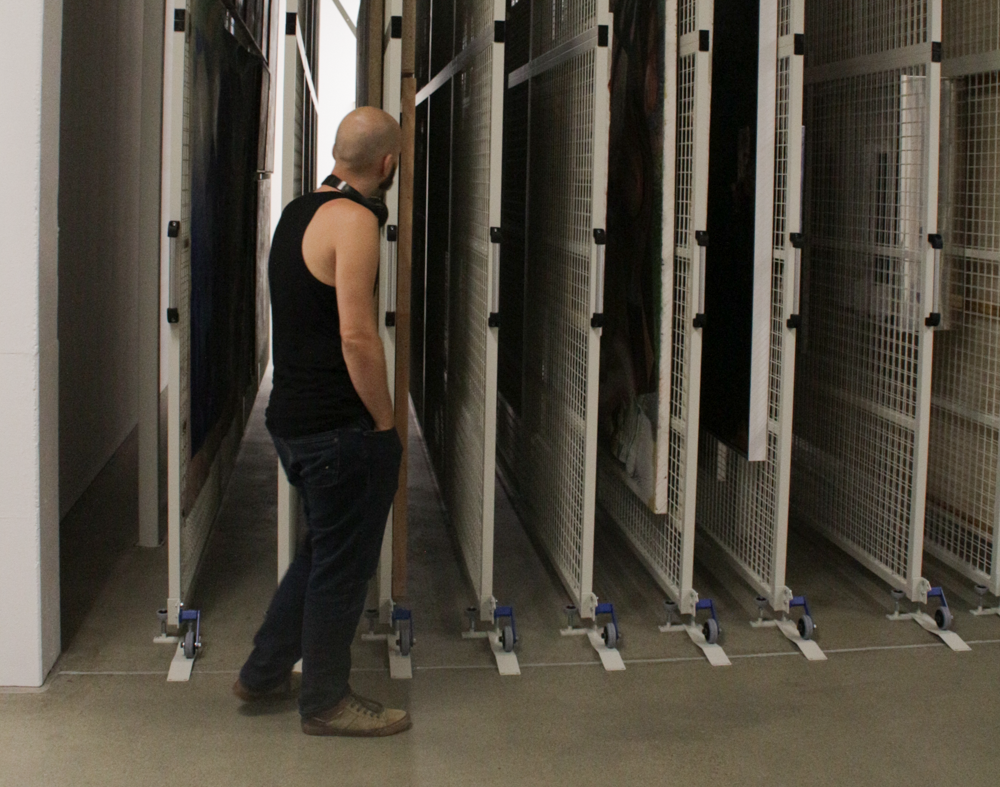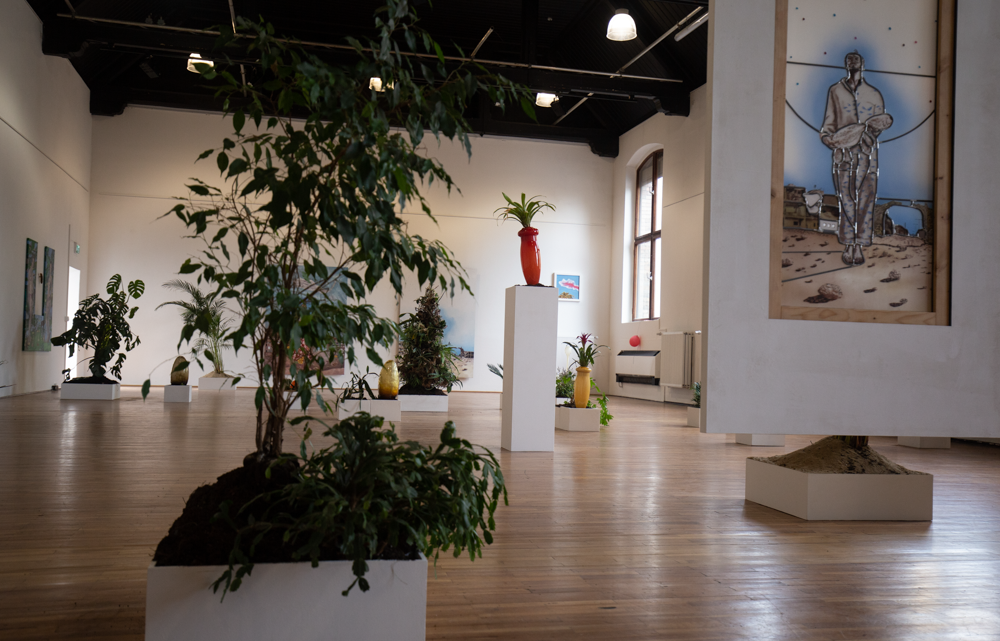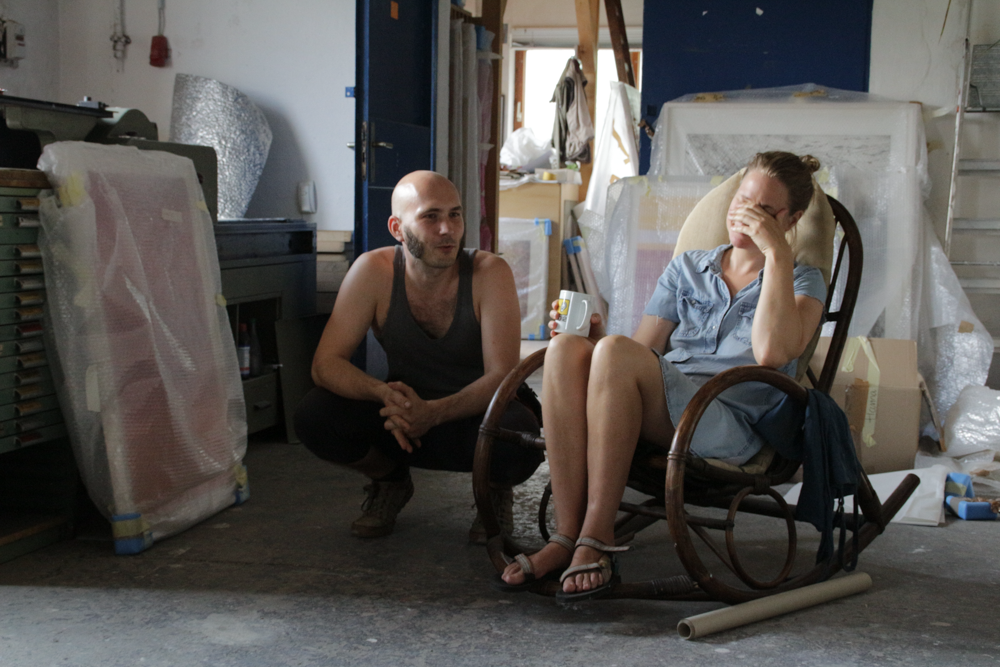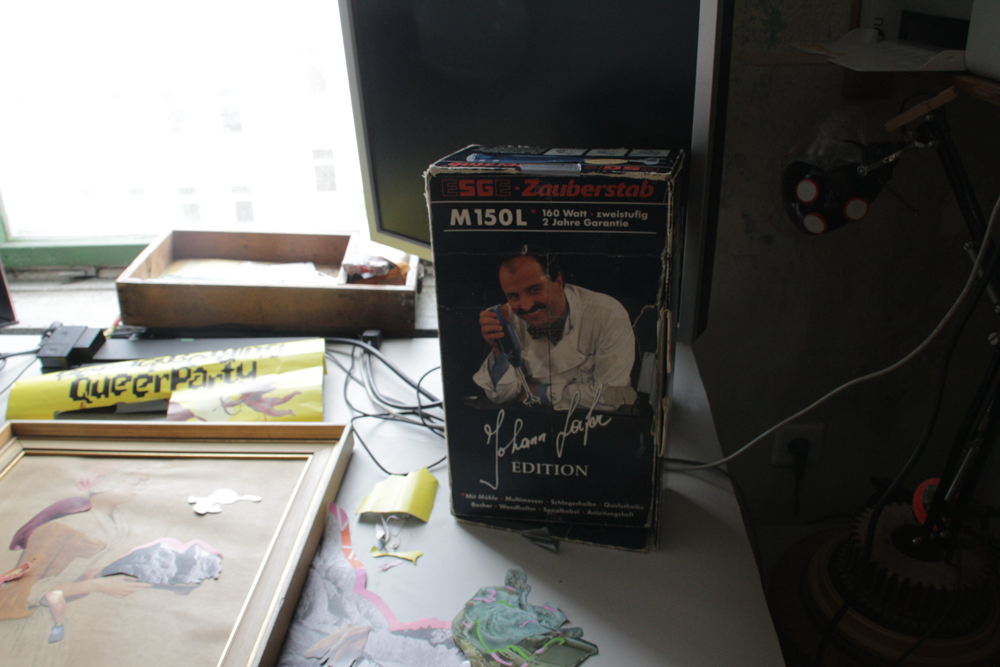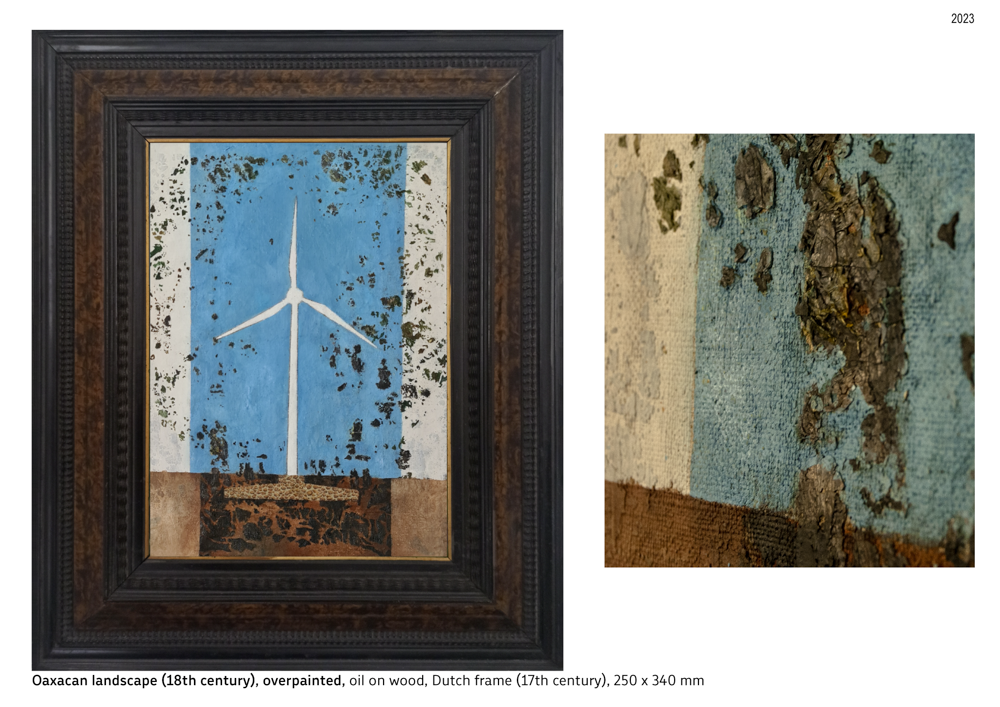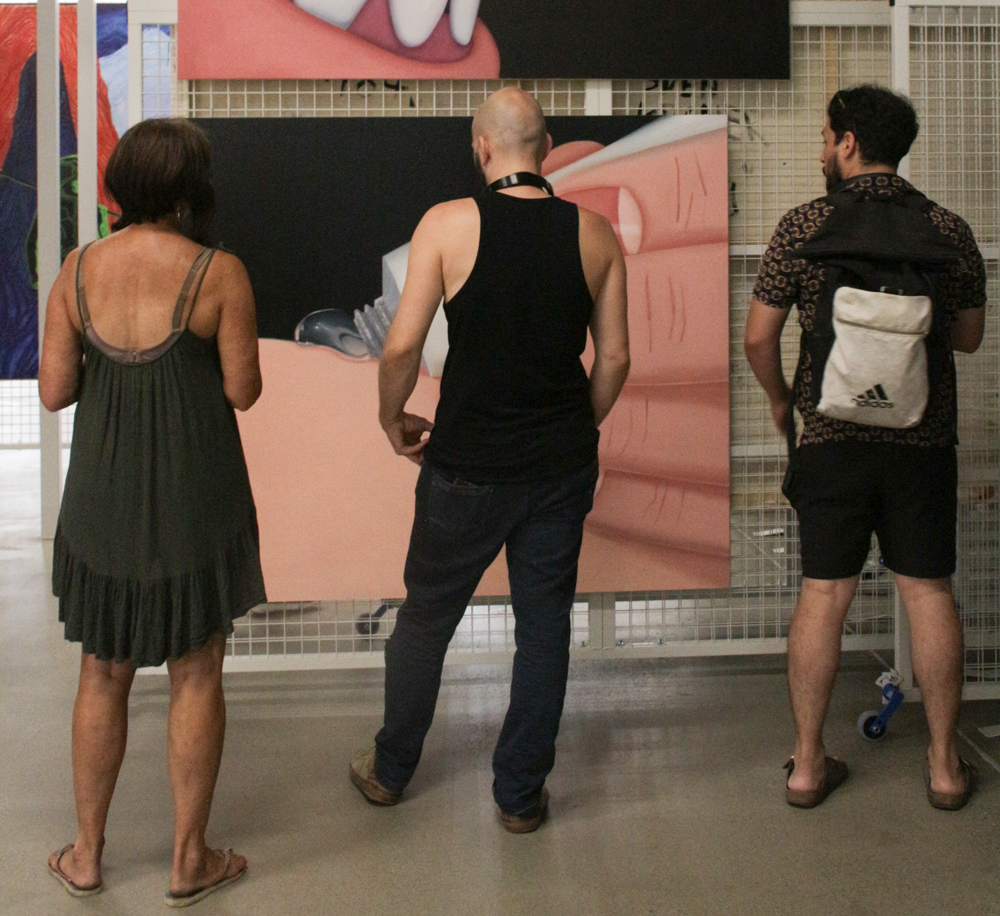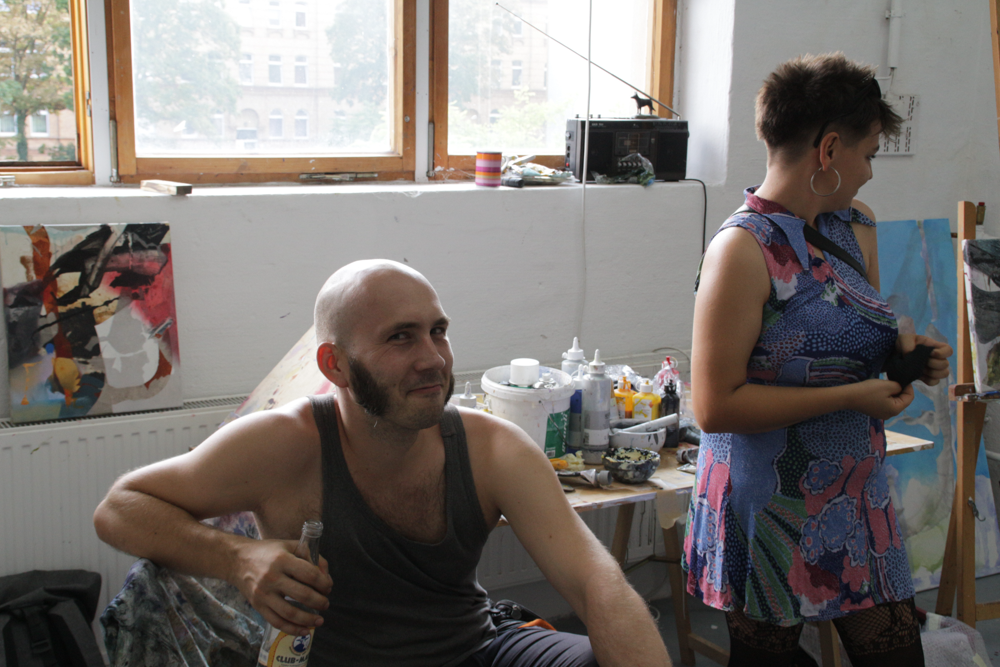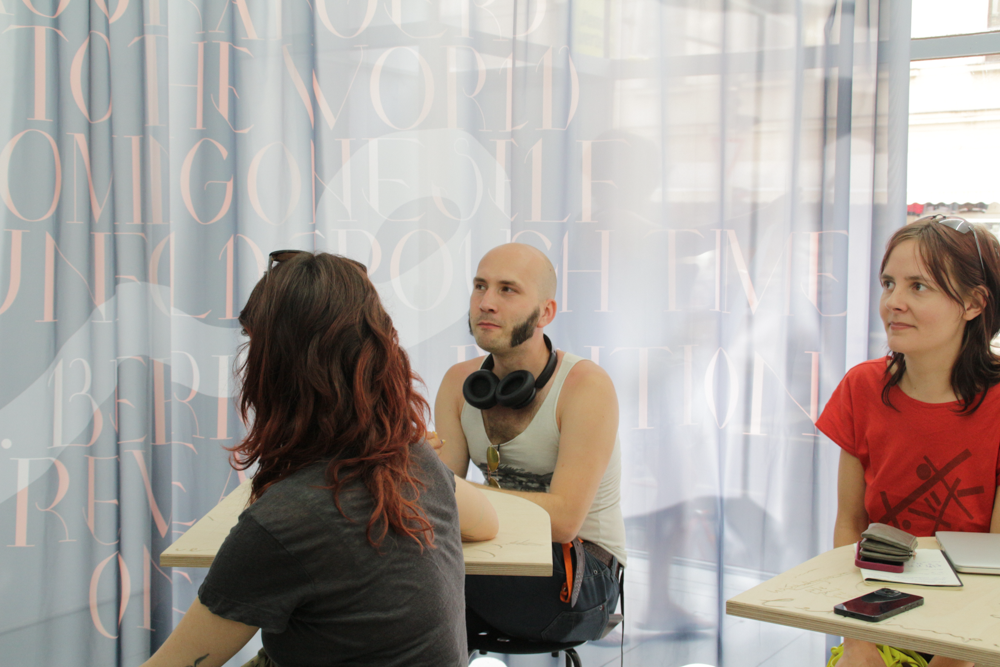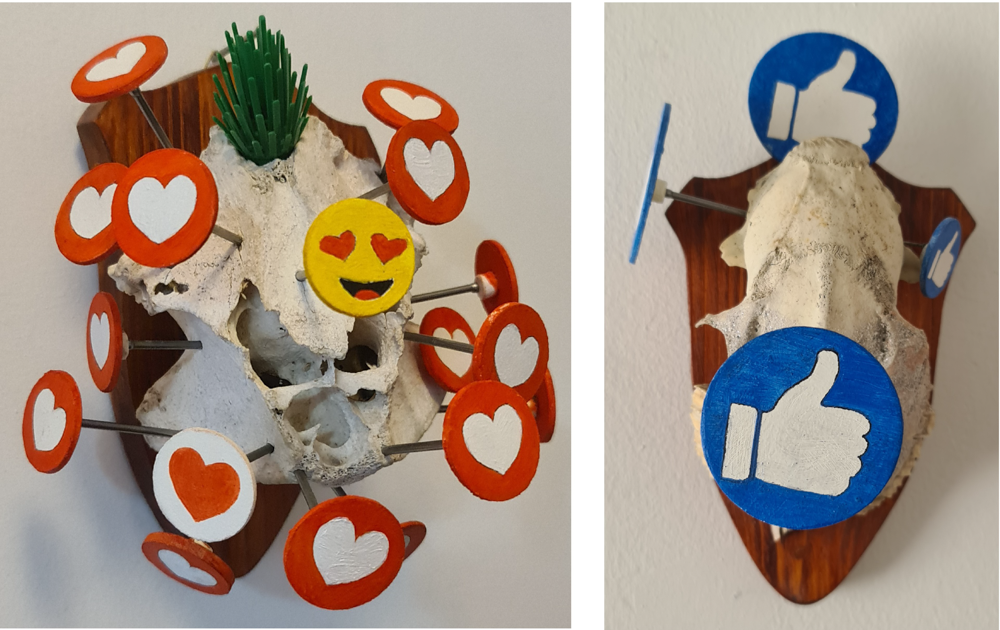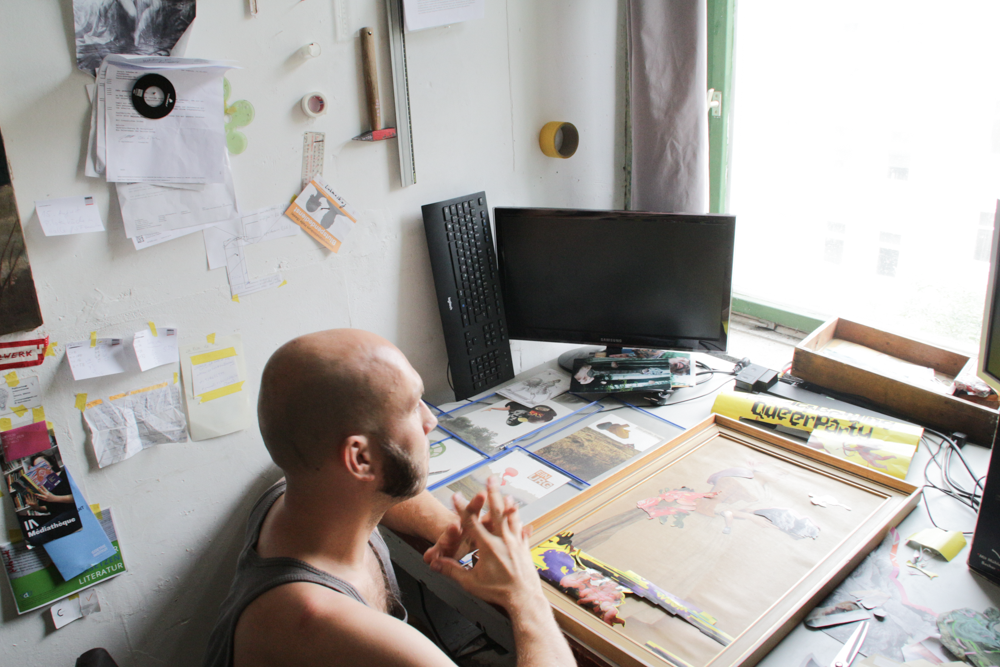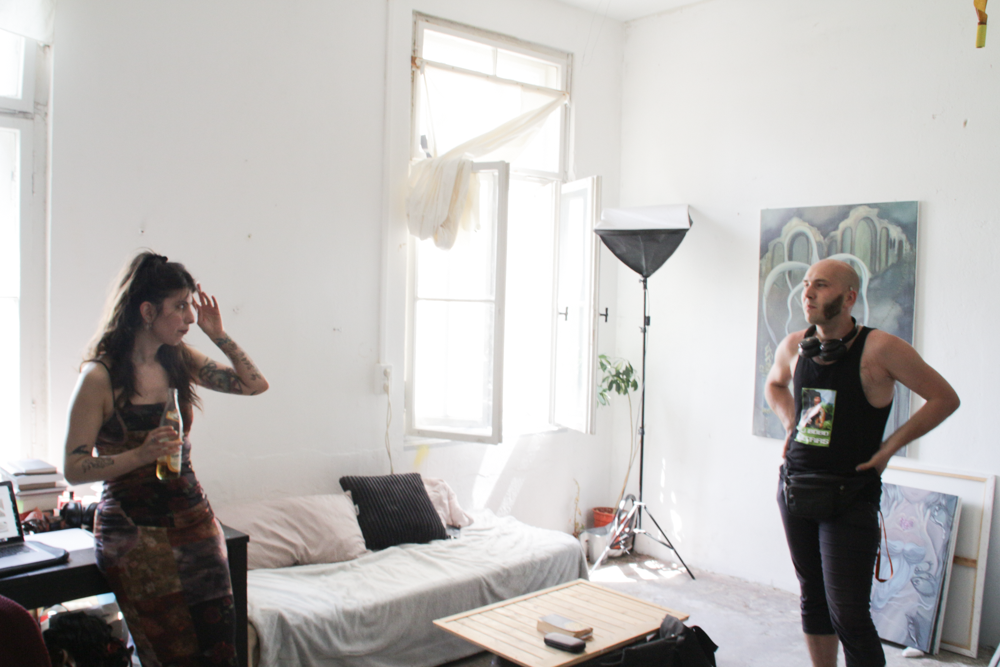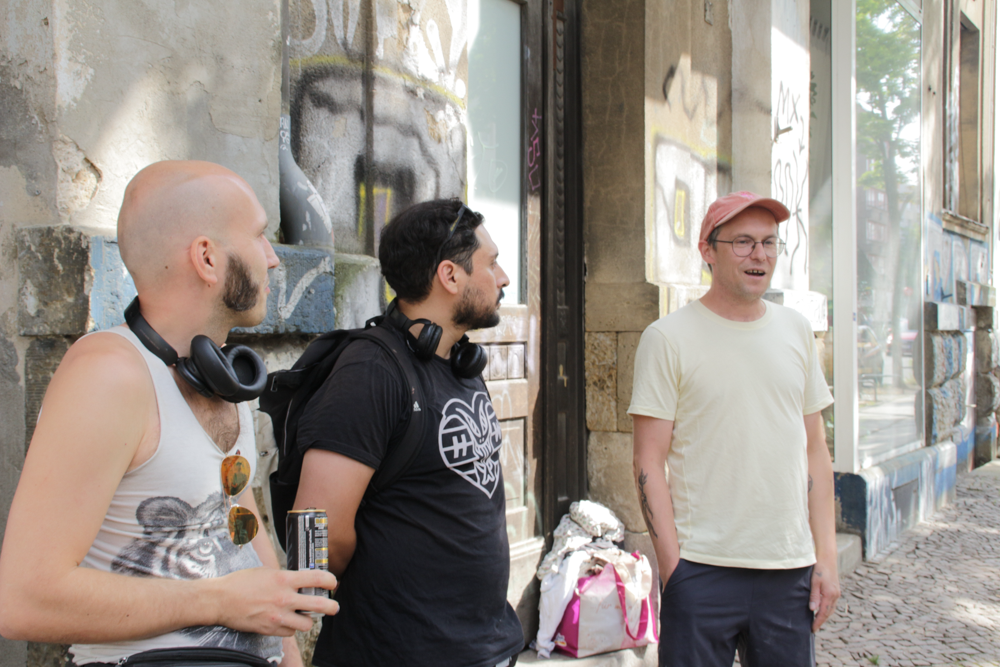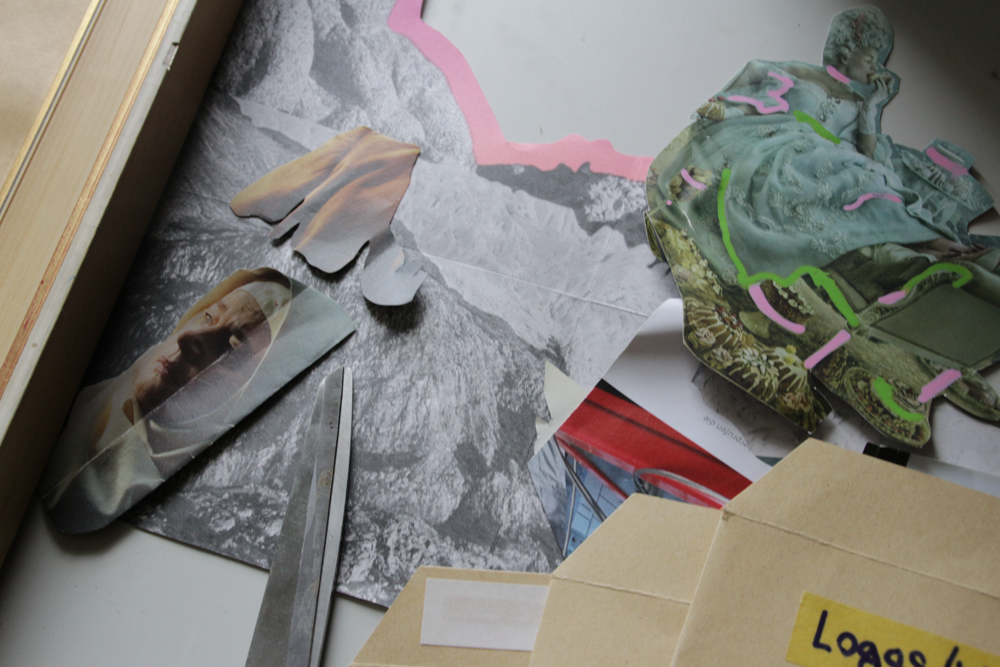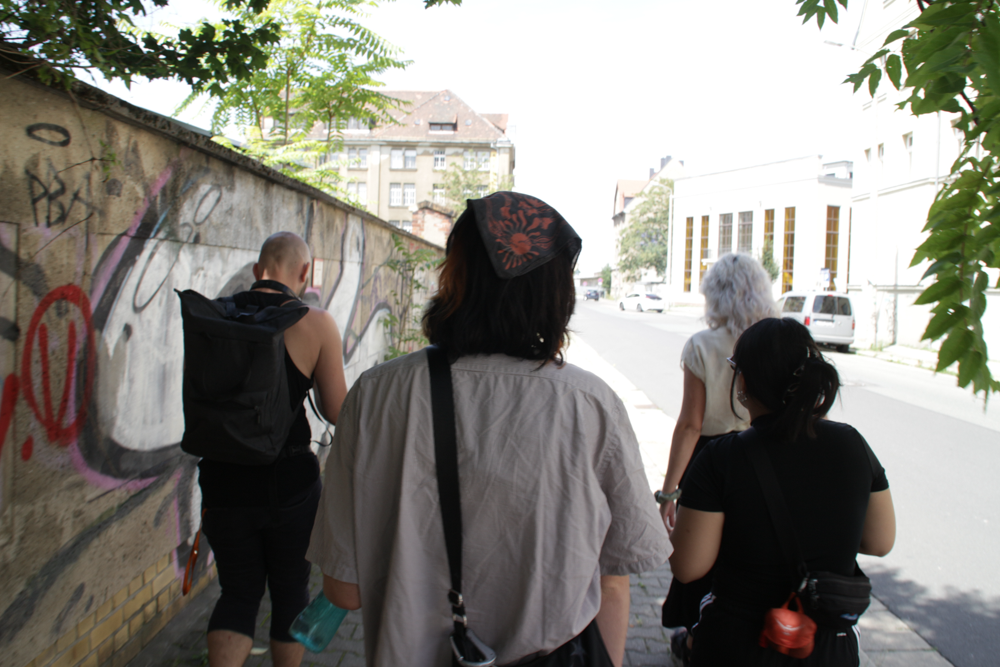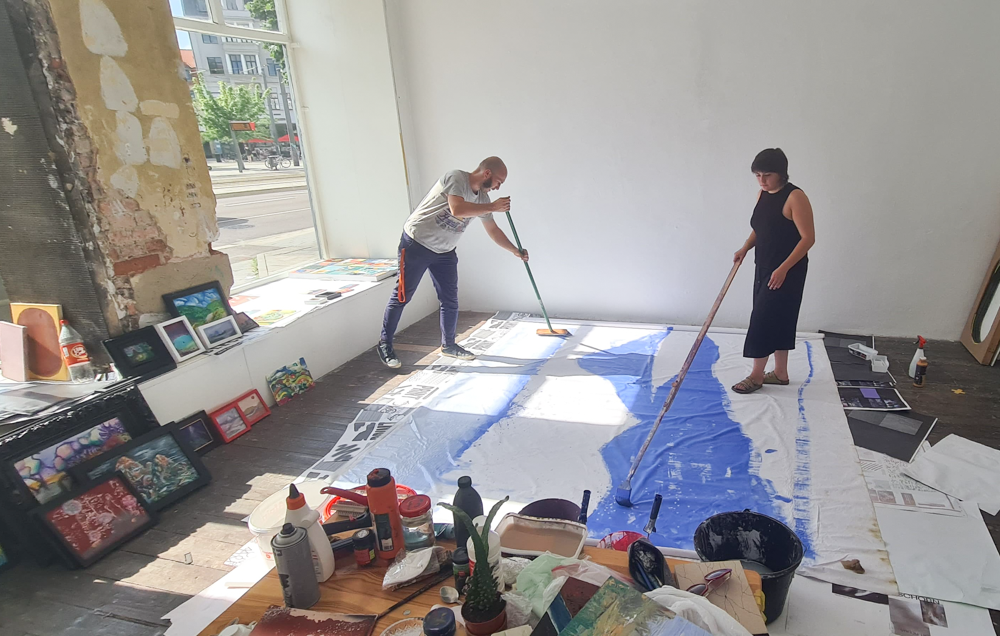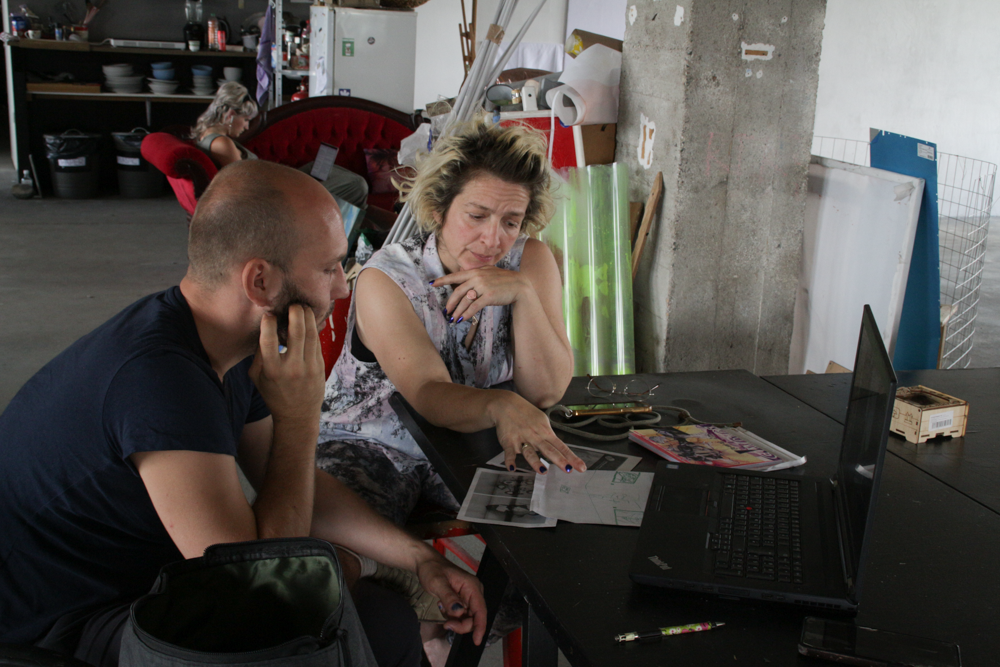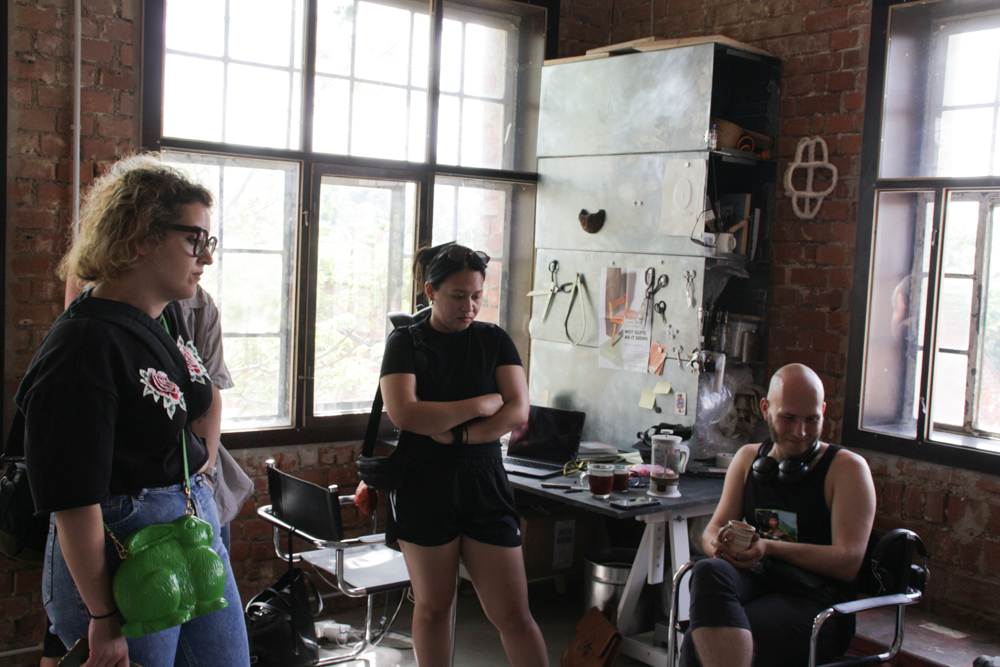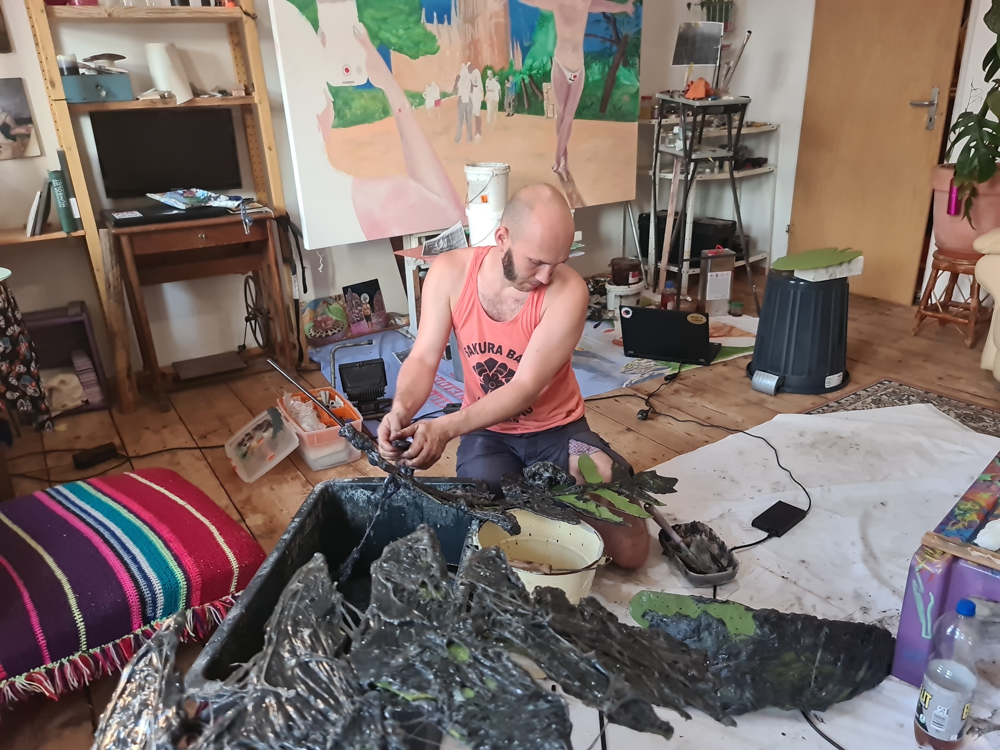Do humans and non-humans view technology differently? How do we reshape landscapes? If we suddenly left, would they return to what they once were or evolve into something different? Based in Halle and Mexico City, the work of Alexander Roschke explores the rawness of untamed nature, contrasting it with the structured, technological human world. He creates dynamic mixed media works that encompass both paintings and sculptures, occasionally incorporating digital media as well.
Moreover this interplay between natural and industrial themes is deeply intertwined with his personal biography. Although initially drawn to graphic design, he eventually joined the experimental class of Image Space Object Glass at Burg Giebichenstein University of Art and Design Halle.There, he experimented with painting, glass painting, and sculpture, consistently weaving autobiographical elements into his projects. Alexander’s work explored how humanity, as part of nature, surrounds itself with natural elements while simultaneously transforming them into urban landscapes. In 2017, this fascination led him to one of the world’s largest mega-cities, Mexico City where he completed a semester abroad at ENPEG “La Esmeralda.” .
The intersection of industry and nature
Upon returning to Germany, Alexander continued to develop his artistic practice while working as an industrial climber for wind power plants. This role provided him with firsthand insight. From this unique bird’s eye perspective, he was allowed to critically examine the environmental and social impacts of wind turbines on natural landscapes, both in Mexico and in Germany. He also considered the subsequent effects on local communities.
photos by PILOTENKUECHE or supplied by artist
Inspired by this exploration, he dedicated a series of works to the wind turbines of Mexico. In some of these works, he portrays wind turbines as archaeological artifacts. Alexander deliberately weathered the surfaces of the paintings to evoke the look of ancient frescoes, reminiscent of long-forgotten human architectural ruins. This aged patina serves as a metaphor, symbolizing both the exploitation of wind turbines and the passage of time. Conversely, other paintings present wind turbines in a more realistic and contemporary light. They rise in the Mexican landscape, towering over nature, and asserting their dominance.
A synthesis of art and experience
Alexander’s 2019 solo exhibition, Ärger im Paradies (Trouble in Paradise), was a synthesis of his artistic practices and travels. The immersive installation was first housed at Künstlerhaus 188 and later at the Literaturhaus in Halle. The show features paintings on glass, oil paintings on canvas and wood, various objects and plants. The installation functions as an experiential journey, inviting viewers into a paradisiacal landscape where different works and objects interconnect. As a result Alexander created a surreal and captivating environment.
The works were accompanied by a conceptual interactive book poses provocative question: “Do you accept this paradise as a form of utopia, or do you want to delve deeper into the works showcased in the exhibition and uncover more content?”. To explore further, viewers are invited to tear through the book, ripping out postcards, metaphorically destroying the notion of paradise. By doing so hidden QR codes were revealed beneath its pages. These codes provided access to Alexander’s normally restricted homepage. There viewers were offered deeper insights into the works within the exhibition space.
Social media as art
Another key aspect of Alexander’s practice is his exploration of our relationship with social media. In Contemporary Trophies he critiques public interaction with platforms like Facebook and Instagram. Alex engaged his audience through an Instagram story and a Facebook story. Viewers were encouraged to collaborate by responding with emojis. Facebook responses were mainly thumbs up and instagram was mainly hearts. As a physical representation, Alexander created two pieces, made from animal skull hunting trophies—one adorned with hearts, the other adorned with “likes”.
In Fleshy Gesture Texture, Alexander will examine the compulsive urge to post images of famous places, highlighting the need to broadcast experiences instantly. Through his works, Alexander challenges us to reflect on the complex intersections between nature, technology, and human behavior, finally prompting us to reconsider our perceptions of paradise, progress, and presence in both the natural and digital realms.
Written by Francesca Revello
Fleshy Gesture : Texture
Vernissage Sat 31 Aug 7-10 PM
Open Sun 1 – Wed 4 Sept 4-8 PM
Alte Handelsschule
Giesserstr 75
04229 Leipzig
Abandoned New Position
Vernissage Sat 21 Sept 7-10 PM
Sun 22 – Wed 25 Sept 4-8 PM
PILOTENKUECHE
Franz-Flemming-Str 9
04179 Leipzig

